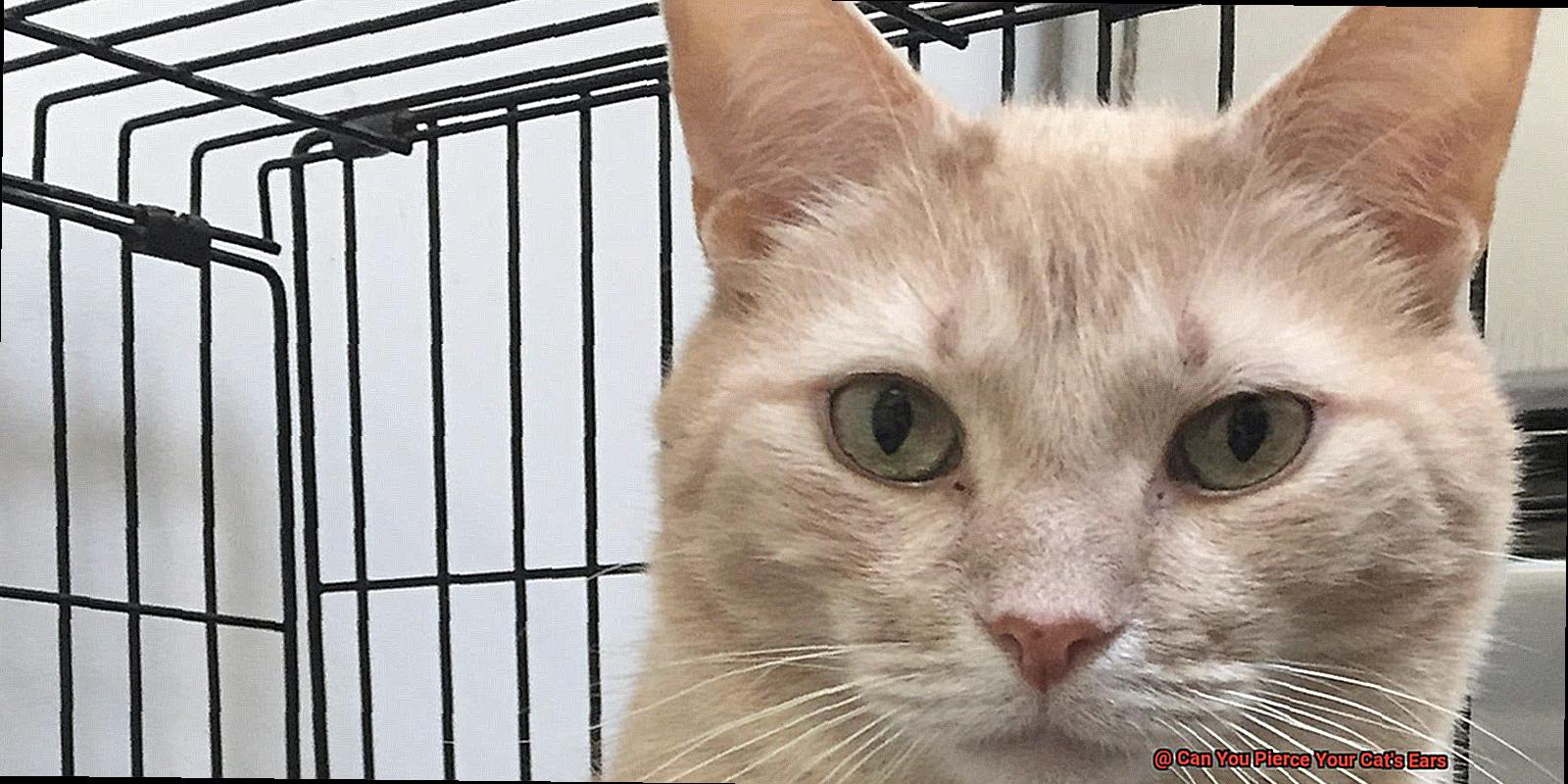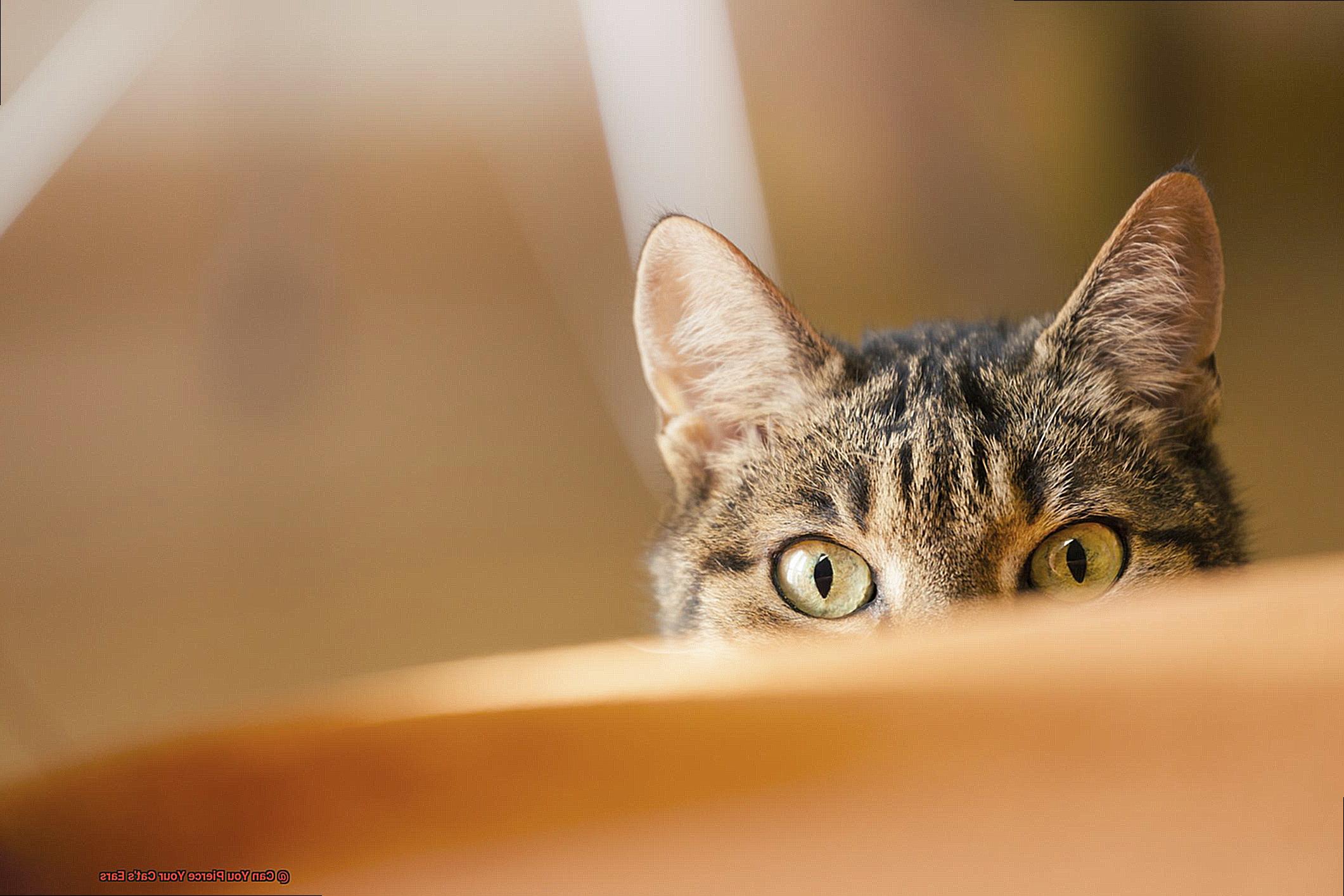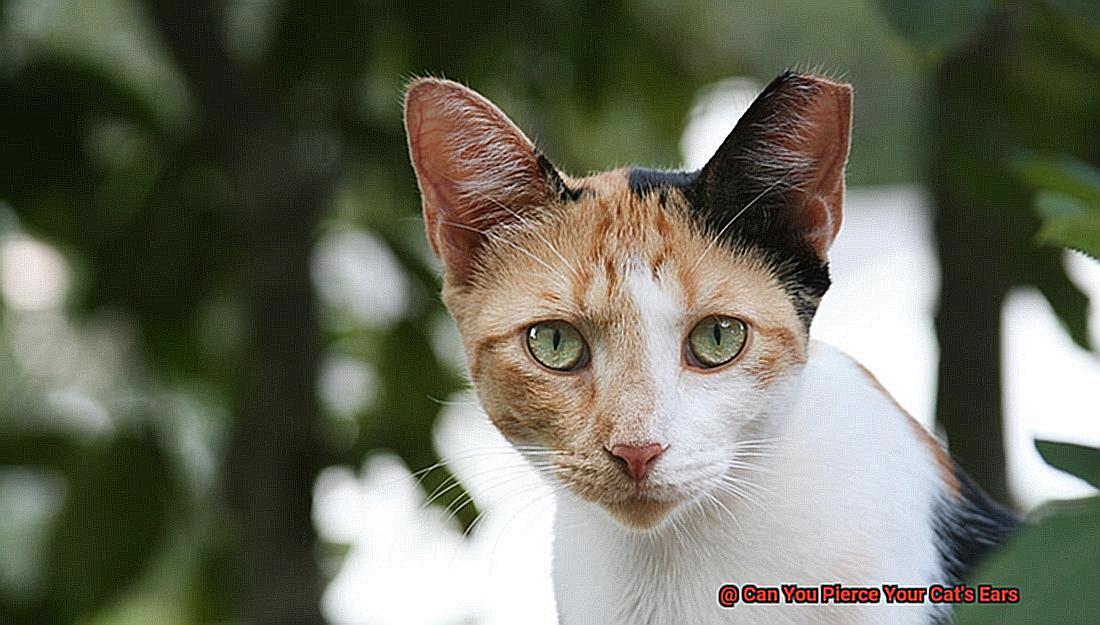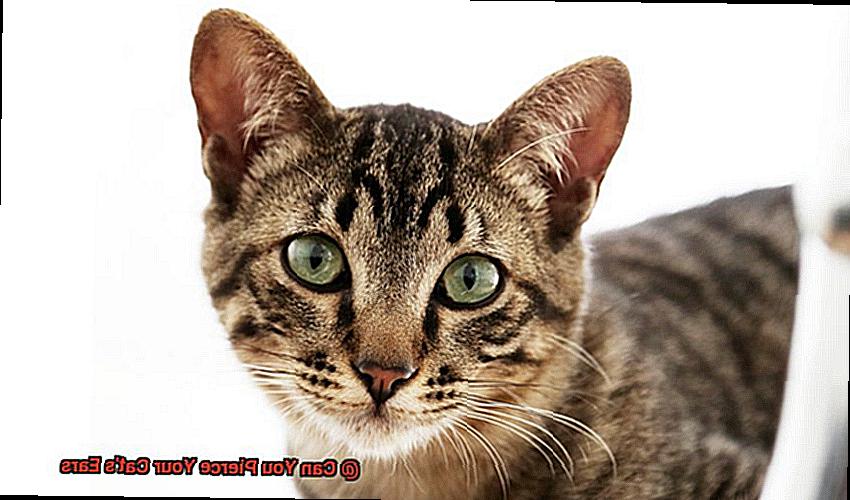From fancy collars to funky haircuts, cat lovers have embraced the trend of customizing their pets’ appearance in recent years. However, there’s one controversial practice that raises eyebrows: ear piercing for cats.
In this blog article, we’ll delve into the arguments for and against cat ear piercing. We’ll also explore the risks involved and ethical concerns associated with altering your cat’s body.
Additionally, we’ll suggest alternative ways to improve your cat’s appearance that are both safe and humane. Animal rights activists and veterinarians condemn ear piercing as a form of animal cruelty.
They argue that cats are living beings that deserve respect and honor, not accessories to be decorated at will. Piercing a cat’s ears can cause pain, inflammation, and trauma.
Moreover, some countries have laws prohibiting the use of ear piercing on animals. On the other hand, some cat owners believe that ear piercing is no different than a tattoo or human ear piercing – it’s a harmless way to express love for their fur babies.
They also claim that it can help their cats stand out and appear more unique. Regardless of where you stand on this issue, it’s essential to educate yourself before making any decisions about your cat’s appearance.
History of Piercing Cats’ Ears
It is believed that the practice of piercing cats’ ears began in this ancient land as a symbol of their elevated status. The Egyptians saw their cats as more than just mere pets; they were protectors, companions, and even deities.
Piercing their ears was a way to display ownership and safeguard them from harm, as well as identify lost or stolen cats. Each cat’s unique ear markings indicated to whom they belonged.
While the piercing of cats’ ears was a common practice in ancient Egypt, it was always done with great care by trained professionals. Any harm inflicted on a cat was considered a crime punishable by death.
The health and safety of these sacred animals were paramount. Throughout history, piercing cats’ ears has been adopted by various cultures for different reasons.
However, in modern times, there is growing concern over the ethics and potential harm caused by this practice. Many animal welfare organizations argue that it is unnecessary and can cause injury or infection to the animal.
The American Veterinary Medical Association (AVMA) does not recommend piercing cats’ ears for aesthetic purposes, citing pain, infection, and even permanent damage as potential risks. Some states and countries have even made it illegal to pierce any animal’s body part for cosmetic reasons.
In conclusion, while the history of piercing cats’ ears dates back to ancient Egypt, it is important to consider the potential harm it can cause to our beloved pets. As responsible pet owners, we must prioritize our pets’ well-being over aesthetics.
Always consult with a veterinarian before considering any kind of body modification for your cat.

Pros and Cons of Piercing Cats’ Ears
One of the main reasons people choose to pierce their cat’s ears is for identification purposes.
A small metal or plastic stud placed in the ear can serve as a permanent marker that helps identify the cat if they get lost or stolen. Additionally, some people find pierced ears on cats to be visually appealing, especially if the earrings are colorful or sparkly.
However, it’s crucial to keep in mind that cats don’t care about aesthetics and may not appreciate being subjected to the process of getting their ears pierced. Moreover, piercing a cat’s ear is a painful process that can cause significant discomfort for your pet.
Cats may experience pain, swelling, redness, and infection at the site of the piercing. Furthermore, ear piercings can increase the risk of injury to your cat’s delicate ear tissue.
The earrings can get caught on things or accidentally pulled out, causing injury to the ear. Lastly, there are ethical concerns regarding ear piercing in cats.
Some people consider it to be a form of animal cruelty, arguing that it is unnecessary and serves no practical purpose other than human vanity. It is important to remember that our furry friends’ wellbeing should always come first.
Legal Implications of Piercing Cats’ Ears
It is critical to consider the legal implications involved before deciding on this procedure.
Piercing a cat’s ears is illegal in many states and could result in hefty fines or even imprisonment for offenders. The consequences of piercing a cat’s ear go beyond legal issues.
The practice can result in pain, infection, or permanent disfigurement for the feline friend. The American Veterinary Medical Association (AVMA) has condemned the use of ear piercing in cats and dogs as it causes harm and distress to the animals.
Furthermore, if a cat is found with pierced ears, the owner may have to face legal action, including seizure of the cat and being banned from owning pets in the future. It is necessary to prioritize the well-being and safety of our feline friends and avoid any activities that may cause them harm or distress.
In some cases, ear piercing may be necessary for medical reasons such as identifying a cat that has undergone spaying or neutering. However, this procedure should be done by a licensed veterinarian using anesthesia to minimize pain and discomfort.
Veterinary Recommendations on Piercing Cats’ Ears
Piercing a cat’s ears may seem cute, but it is considered animal cruelty and can result in severe health complications.
The American Veterinary Medical Association (AVMA) strongly advises against any cosmetic alteration that is not medically necessary, and piercing a cat’s ear falls under this category. The process involves creating an open wound with a sharp object, which can easily become infected and cause pain and discomfort to the cat.
Cats are known for their fastidious grooming habits, and if they try to clean the wound, they can introduce bacteria into the wound site, leading to further infection. Moreover, piercing a cat’s ear can interfere with their communication system as cats use their ears as an essential part of their communication with other cats.
Breeds That Naturally Have Folded Ears
The answer is a resounding no. Veterinarians and animal welfare organizations strongly advise against piercing a cat’s ears because it can cause unnecessary pain, discomfort, infections, and other health complications.

Scottish Folds, American Curls, and British Shorthairs are just a few examples of cats that have naturally folded ears due to genetic mutations.
These unique features give them an adorable and cuddly appearance, but they also make them prone to ear infections and hearing problems. Piercing their ears would only add to their vulnerability.
In some countries, piercing a cat’s ear can even be considered animal cruelty. It’s crucial to prioritize the well-being and comfort of our feline companions above aesthetics or personal preferences.
Instead of piercing their cat’s ears, pet owners can show their love by providing them with adequate food, shelter, medical care, and affectionate attention. It’s also essential to note that cats use their ears as a vital component of their communication system with other felines.

Altering their ear structure could jeopardize their ability to socialize effectively.
Potential Risks Involved in Piercing Cats’ Ears
While it may seem like a fashionable way to make your feline friend stand out from the crowd, it’s essential to understand the potential risks involved. First and foremost, infection is a significant danger associated with piercing cats’ ears.

Cats’ ears are incredibly sensitive, and using non-sterilized equipment or performing the procedure in an unclean environment could lead to severe infections that could have long-term consequences. Who wants to see their furry friend suffer in pain?
In addition to the possibility of infections, piercing can cause intense physical pain and discomfort for cats. Puncturing the skin and cartilage can lead to inflammation and pain that can last for an extended period.
It’s not fair to put your pet through such agony just for the sake of fashion. But that’s not all – piercing cats’ ears can also result in behavioral changes that may harm your pet.

Some cats become anxious or agitated after the procedure, which could trigger changes in their personality or even lead to aggression towards their owners. Is it worth risking your pet’s well-being just for a trendy statement?
Finally, it’s essential to note that piercing a cat’s ears may be illegal in some jurisdictions. Animal cruelty laws prohibit causing unnecessary pain or injury to animals without a legitimate medical reason, and you don’t want to find yourself on the wrong side of the law just for the sake of fashion.
Instead of resorting to such services, show your love by providing your cat with proper care and attention and consulting with a veterinarian on how to care for their unique ear canals.
Conclusion
The debate surrounding cat ear piercing is still ongoing, with some pet owners viewing it as a harmless way to express affection for their feline friends.
However, animal rights activists and veterinarians see it as cruel and inhumane. Piercing a cat’s ears can cause pain, inflammation, trauma, and even permanent injury.
Moreover, many countries have enacted laws prohibiting the use of ear piercing on animals. As responsible pet owners, we must prioritize our cats’ well-being over their appearance.
Instead of subjecting them to unnecessary pain and suffering, we should explore alternative ways to enhance their natural beauty that are safe and humane. For instance, providing them with proper nutrition, grooming, and medical attention will go a long way in improving their overall health and appearance.
It is also crucial to consult with a veterinarian before making any decisions about your cat’s appearance. They possess the expertise required to provide tailored advice on how to care for your pet’s specific needs without causing distress or harm.

